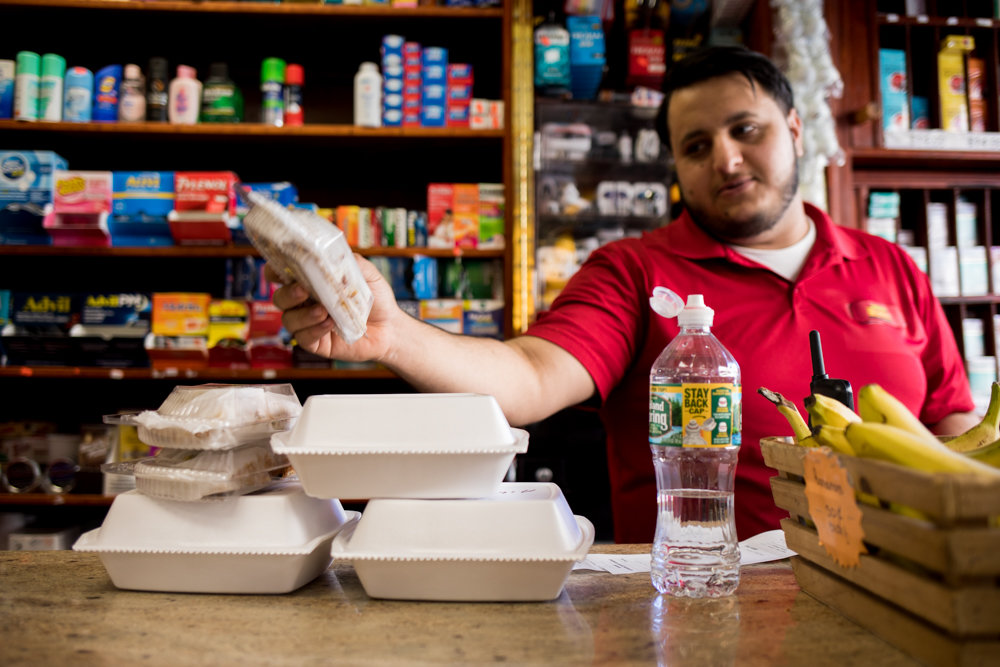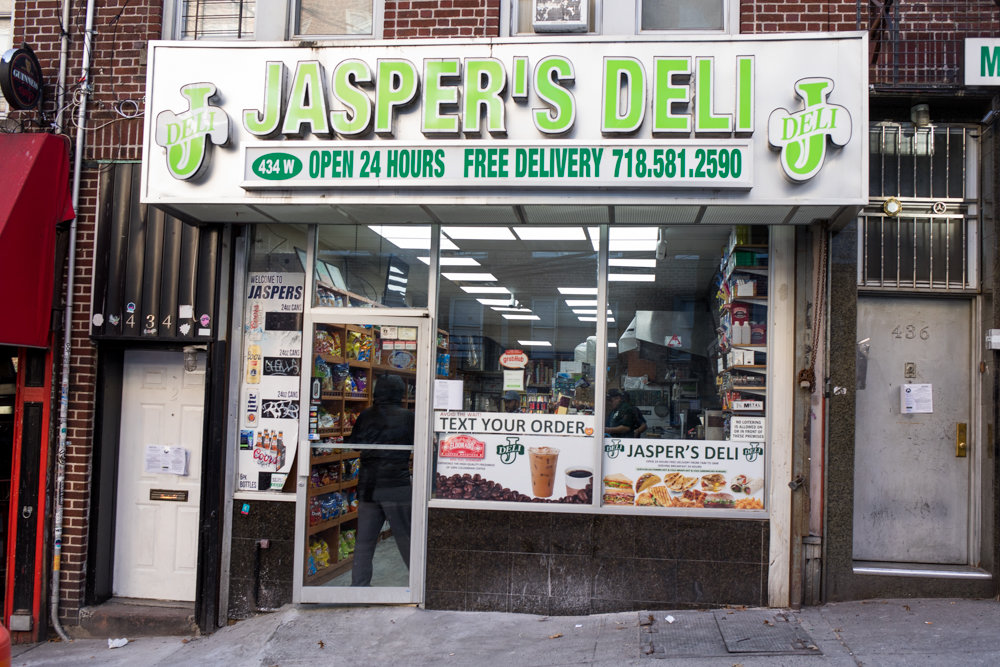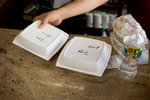City slays plastic foam, ending iconic food container’s reign
Plastic foam is quickly becoming a thing of the past, if not already nearly extinct — at least at some law-abiding local eateries.
The city’s ban on those single-use plastic clamshell-like containers — long the darling of takeout spots and halal carts — went into effect Jan. 1. Foam cups, plates, bowls, trays and even packing peanuts are now prohibited from possession, sale or use.
But they probably won’t vanish immediately, in part because they can be maddeningly difficult to get rid of. The material isn’t biodegradable, and is hard to recycle. What’s more, it can break into small pieces that can lay low in landfills for a very long time.
But why no more foam?
The city’s sanitation department determined that dirty, post-consumer, single-service food and beverage containers can’t be recycled in a way that’s economically feasible, good for the environment, and safe for employees, according to a 2017 departmental report. Researchers have found it would take hundreds of years for the foam to biodegrade.
There are exceptions to the ban, however, including foam containers used for pre-packaged food that have been filled and sealed prior to the food service establishment receiving it. Foam containers used to store raw meat, pork, fish, seafood or poultry sold from a butcher case or similar retail appliance also get a pass. And, plastic foam blocks used as protective packaging in shipping are OK, too.
Meanwhile, some Riverdale and North Riverdale businesses were still using foam since the new year started. They’re on the right side of the law — for now: The city won’t actually start levying fines until July. In the meantime, businesses caught clinging to plastic foam packaging may receive warnings.
Yet, some eatery owners — like Jay Aowas at Jasper’s Deli on West 238th Street — are well ahead of the curve.
A customer ordered two cups of coffee — one with sugar, one without — at Jasper’s Jan. 11, but they weren’t poured into foam, because Aowas stopped using the now-banned material months ago.
“We used to,” said Aowas, who’s been dishing out college-comfort fare like hearty wraps and hot sandwiches since 2007. “We had to change (packaging) because (the city) said they’re going to come with the law.”
In fact, he wasn’t totally sure when it took effect, but had already made the transition some six months ago, just to be certain he’d be in compliance once plastic foam’s time came to an end.
“If it’s something you’ve got to change, it’s not worth the fine at all,” Aowas said.
As for how eschewing foam has affected business, it hasn’t really. “It’s the same,” he said, although using different food packaging costs a little extra. What that alternative is made from, Aowas isn’t totally sure, but speculates some kind of plastic.
Still, the cost isn’t drastically higher, Aowas said, estimating somewhere between $5 or $10 more for each box of around 300 containers. Even so, he’s not concerned his business is taking a big hit from now paying around $23 a box compared with less than $20 — for foam — before.
Flora Chen, meanwhile — manager at the Golden Phoenix Chinese restaurant on Riverdale Avenue — took orders from behind the counter amidst a recent Friday lunch rush. Steam rose in the kitchen behind her amidst a wafting smell of hot oil as at least three cooks toiled above food-and-sauce-spattered steel stoves and fryers.
While Chen didn’t appear to be dreading foam’s farewell, such packaging certainly comes in handy at a business like hers — especially the larger containers, for their flexibility when it comes to boxing bulkier chunks of fried chicken, for example.
Now Chen is looking into different kinds of boxes, although which material she’ll opt for remains uncertain.
“We’ve used the foam bowls for so many years,” said Chen, who’s worked as a manager at Golden Phoenix the last couple years, although the restaurant itself has been there for around three decades.
Part of the difficulty of doing away with foam containers is the fact she and her staff have grown so used to them.
They’re also the cheapest food packaging option, although Chen says the restaurant has been ordering them for so long, she’s not sure how much they cost.
Not far from Golden Phoenix, Moe Aly — working the register at the New Riverdale Gourmet Deli — seems to have come to terms with ending the eatery’s reliance on foam containers. At least philosophically, if not in practice.
“We use them a lot,” Aly said as he bagged orders around lunchtime recently. “But we’re going to have to stop and use something else” to avoid getting slapped with a penalty.
Aly lauded plastic foam’s convenience, but vowed the deli would “find another way,” possibly relying more on clear plastic containers.
Like Chen, Aly wasn’t certain how much foam containers cost the deli, but estimates they probably pack around 50 or 60 of them over his typical eight- or nine-hour shift. Still, finding a substitute probably won’t be too problematic.
“Not all customers like those foam” containers, Aly said. “Some of them just want their sandwiches wrapped up.”
Meanwhile, other small grub spots fretting over abandoning foam probably could take a cue from Jasper’s. And even if alternatives are more expensive, Aowas recognizes there’s a world beyond his deli’s day-to-day bustle.
“It can add up,” Aowas said of paying more for non-foam containers. “But it’s better for the environment.”
As long as they get their food, the deli man said, “Customers don’t even know.”















